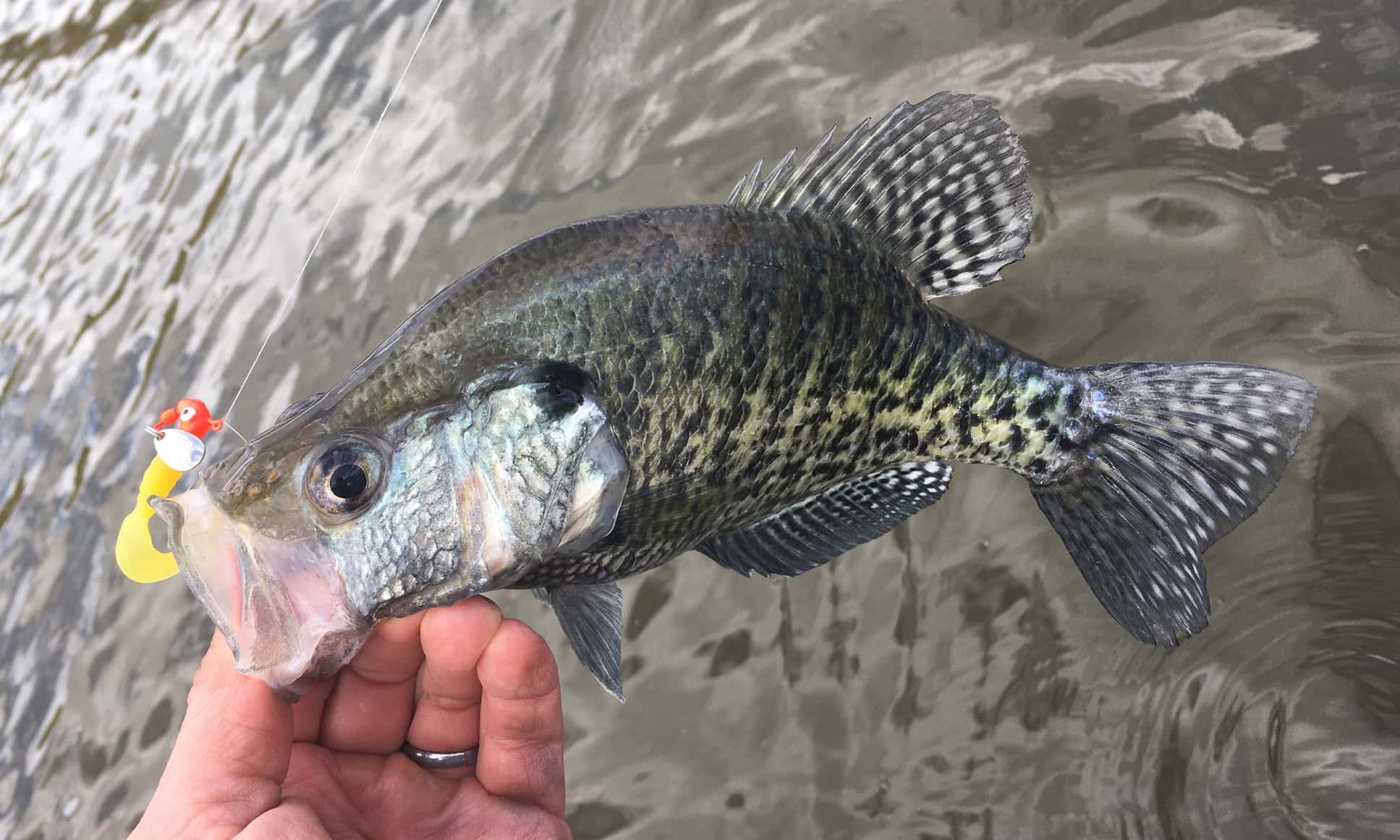
White On. This nice white crappie, complete with dark spawning bars, fell for a Road Runner jig worked back to the boat with the horizontal “flatline” retrieve. Simonson Photo.
By Nick Simonson
While crappies aren’t known for adrenaline-inducing strikes or heart-pounding battles, they’re often some of the earliest angling excitement in spring as they stage to spawn and hang on the edge of shallow northern bays and other areas where they’ll beget the next generation of slabs.
While an EKG might not register the spike in pulse when one of these popular panfish is hooked, thinking of that heart monitor readout is a good way to remember a reliable tactic for catching them this time of year and well into the openwater season.
Flatline
Except in extreme moments of panic when being chased by predators, it’s rare to see a baitfish make a quick descent or upward rise in the water. Most often minnows will move in a relatively horizontal direction without much of a vertical component to their action. Presentations for crappies should mimic this natural movement and creating a flat line of travel, instead of a dipping arc back to the boat, will help keep things looking more normal and draw the attention of specks seeking a quick meal all the way up to the end of the retrieve.
To create a horizontal line of travel with traditional tackle, such as tube jigs, small ballhead jigs, and even flashier offerings like jigs with small attached spinners, requires a combination of rod position and line management. Start the process of making this horizontal presentation by casting out and counting a lure down to the desired depth, estimating a foot of water for every second counted. Once the level at which crappies are holding is reached, begin reeling to retrieve the jig while slowly lifting up on the rod tip from a point parallel with the water at the moment of splashdown to about 60 degrees by the time the lure is next to the boat. This allows room for a quick and snappy hookset while keeping tension on the line and maintaining a horizontal retrieve.
Irregular Heartbeat
During the retrieve, a slight twitch or jiggle in the rod tip provides a strike-triggering action or flutter in the lure and any tails, tentacles or flickering blades associated with its plastic or metal accessories like grubs, tubes and spinners. Work these pulses into the horizontal retrieve to set off following fish, as the slight movements are a cue for feeding predator that something is amiss, and the prey is vulnerable.
Note too that crappies will more often rise to a lure than drop down to it, so if the presentation rolls out slightly above the school, that will be fine. Be prepared for a hookset immediately after the movement in any area where fish are staging and get ready for a quick snap of the wrist to connect with fish that rise to take the bait.
Throughout the country and particularly in the south, crappies are often referred to as “papermouths” due to the soft, thin membranes that form the area around their jaws. As such, a powerful hookset is not required to get the point and barb into them and anything too strong is likely to tear the lure out and result in a missed strike. Remember that a quick snap is all it takes to connect, and any horsing of the fish may result in crappies falling off the line prematurely.
Practice the flatline retrieve this spring for crappies as they head up to spawn or settle into their summer patterns along weed lines and other habitat that allows for exploration of the water column. With some fine-tuning, it’s possible to drag a bait in a near-perfect horizontal line that mimics the movement of real prey and brings fish in for a look.
Remember to add in the occasional twitch or pulse to simulate a flicker of distress to entice a strike as crappies close in.

